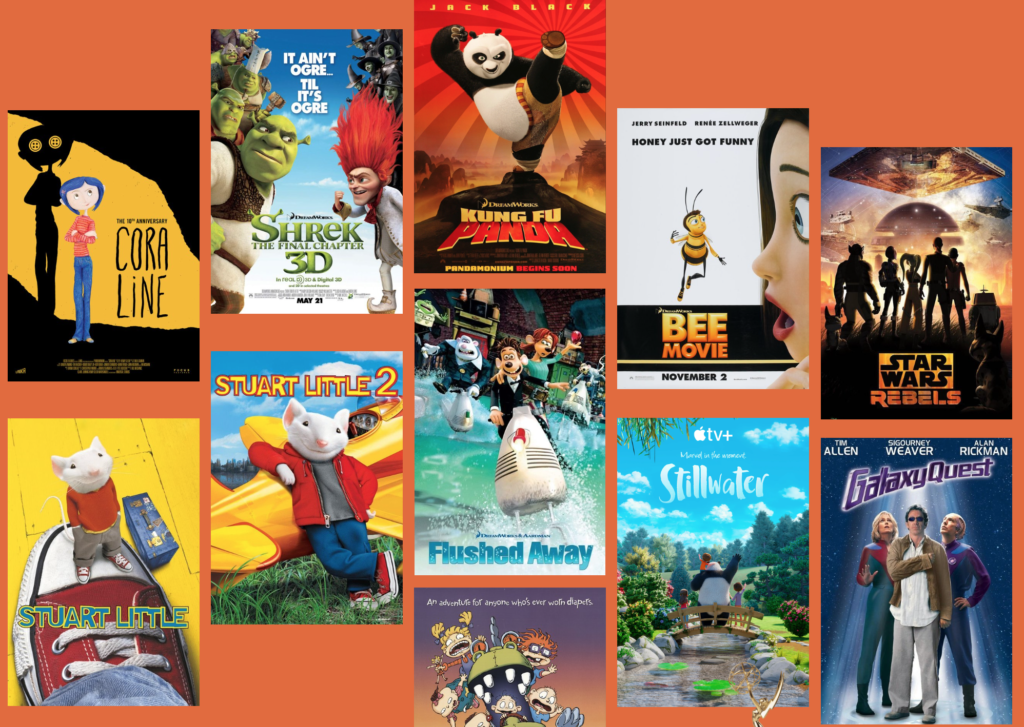By ArtiZen Editor
Introduction
Spyros is a brilliant animation industry veteran with extensive creative and production experience. He has worked at major Hollywood studios such as Lucasfilm and Dreamworks, as well as high-growth Silicon Valley tech companies. As a Story Artist, he has contributed to household name movies such as Coraline, Kung Fu Panda, and Bee Movie, as well as TV shows like Star Wars Rebels and Star Wars, The Clone Wars – winner of four Emmys.
Personal Portfolio: https://www.storybyspyros.com

What piqued your interest or inspired you to become a narrative writer and animator during your youth?
Growing up in the 80s and 90s, I witnessed a period of innovation in popular culture, particularly in cinema. This era saw a resurgence of creativity in Hollywood and a renaissance in Disney animation, in particular, all fueled by rapid technological advances.
My father, an economist with a stern demeanor, surprisingly harbored a passion for comics and film. Our basement housed his extensive comic book collection, which he read nightly. Before VHS became popular, he even set up a 16mm projector in our living room for family movie nights. Early on, I developed an appreciation for storytelling and its ability to bring joy and foster connections within a family and community.

You came to the States at 17 from Greece. Do you speak Greek, and was there any cultural shock when you first moved? Were you a fan of American movies/shows?
I speak fluent Greek.
I grew up incessantly watching the likes of Star Wars, The Godfather, E.T., Beauty and the Beast and Pulp Fiction.
Being an immigrant is never easy. I can write a book filled with embarrassing and hilarious culture shocks, especially from my early years in the US. But surviving this initial awkward period and becoming multicultural is one of my most cherished experiences.
How did you break into the industry as a Story Artist?
In 2003, the recruiter at Dreamworks, who happened to be the same person that offered me my very first job in the industry, invited me to take a test for a position in their story department. I was asked to write a short story, based on a simple premise they assigned, fully board it and pitch it to an audience of some of the studio’s directors and producers. It went well. I got the job!
What’s your favorite part of being a story artist? Do you prefer script-writing or drawing storyboards?
Both writing and storyboarding are tools in storytelling, each offering unique benefits. Writing allows for rapid iteration on story fundamentals, while storyboarding offers the most efficient visual exploration of the narrative. I don’t have a strict preference, but I advocate for storyboarding because it’s often undervalued as an authoring tool. Entire successful shows have used storyboards alone. Storyboarding also provides essential information for accurate production budgets, schedules, and risk assessments.
You’ve worked on award-winning shows like Star Wars, Kung Fu Panda, and The Walking Dead. Could you elaborate on your contributions?
In Kung Fu Panda, I was one of the early story artists, primarily focusing on fight choreography. In Coraline, I was tasked with figuring out the tricky climax sequence. For Star Wars: The Clone Wars, I helped develop a 3D story pipeline that achieved cinematic results within tight TV schedules. I also choreographed one of the more popular fight scenes: Darth Maul VS Pre Pizsla. With The Walking Dead, I shifted the art direction towards a more graphic style, departing from the franchise’s decade-long realistic approach.
What’s the general production process for big movie IPs? Are there set rules or pipelines?
Production pipelines vary greatly and continuously adapt to technological advancements and new business models. Generally, the more innovative a project’s story and art are, the more customized the pipeline becomes. Conversely, projects aiming for familiar results with predictable budgets tend to follow traditional workflows. The overarching process includes Pre-Production, where the story is developed; Production, where assets and shots are created; and Post-Production, where these elements are assembled.
How do scriptwriters, story artists, and animators work together on large productions like Star Wars or Kung Fu Panda?
Large-scale productions typically involve hundreds of specialists. Scriptwriters, story artists, and animators often work in separate teams, with directors and producers ensuring the story’s vision is preserved as it progresses through the pipeline.
The hierarchy in productions varies depending on the project. Generally, a producer assembles a development team made of screenwriters, a director and a handful of story artists. Ideally, the story artists and writers inspire one another and work together to compose the best possible content and visuals that fulfill the director’s vision within the producer’s limits. The boards are cut together, with temporary sound into “animatics” – rough versions of the movie that nevertheless give a fairly clear idea of whether the story works and whether the project deserves the typically vast investment of time, effort, and money to complete. If the story has problems at this first stage, it’s unlikely that it will improve while in production.
Which project are you most proud of, and why?
The Clone Wars was a unique blend of artistic, production, and engineering talent. George Lucas personally oversaw the project, encouraging experimentation with new processes and tools that seemed ambitious at the time but ultimately contributed to the series’ success. We introduced Star Wars to a new generation and remains some of the best storytelling in the franchise. It was a childhood fantasy taking flesh before my eyes.

Who impressed you the most as a film director or producer?
The ‘Movie Brats’ of the 1970s—first generation film school graduates like Francis Ford Coppola, George Lucas, Steven Spielberg, Brian De Palma, and Martin Scorsese—entered Hollywood during a challenging period yet revitalized the industry.
Is there any IP or universe you’re interested in working with in the future?
I believe we are entering an era that will shy away from reboots and remakes towards more original content. Having worked extensively with established IPs, I’m now more keen on developing new, original stories from scratch.
Have you led a team of storyboarding artists and 3D animators? Do you have experience producing game trailers, and what does the process entail?
Yes, I have been producing for the past eight years. I’ve produced teasers for major franchises, such as The Walking Dead, building in-house pipelines and teams from scratch. These projects typically range from 2 to 4.5 months and cost under $100k per minute, depending on production quality.
If you were to teach storyboarding students, what would your course syllabus look like, and what’s the most important thing to start with for storyboard beginners?
My course on storyboarding would focus on three fundamental pillars:
- Clarity: Ensuring that each beat clearly conveys the narrative and emotions intended by the story.
- Innovation: Encouraging students to think outside the box, experiment with different styles, and push creative boundaries.
- Iteration Speed and Audience Testing: Teaching the importance of rapid prototyping and getting feedback early. The ability to quickly iterate on ideas and test them with an audience ensures it resonates with viewers.
The most critical skill for beginners is developing the habit of observation and sketching. I encourage every student to carry a sketchbook at all times and capture their observations as they go through life. This practice hones their ability to draft quickly and communicate clearly while building a rich visual vocabulary.

This is an original interview conducted by ArtiZen with the artist. If you are a media and interested in reposting this article, please get in touch with our editorial team for reposting policy. [email protected]




